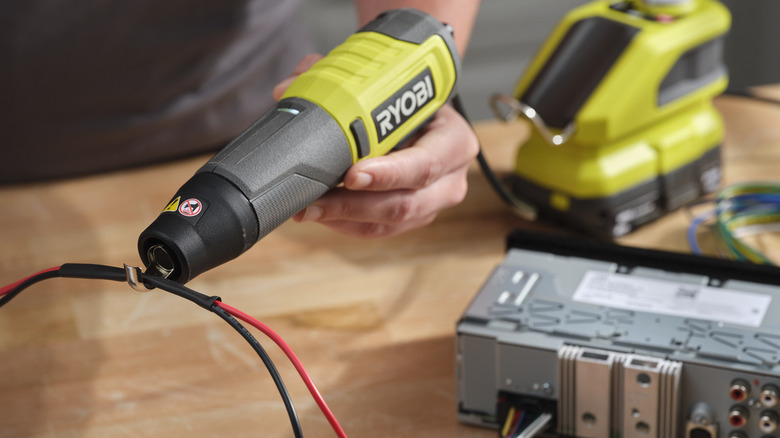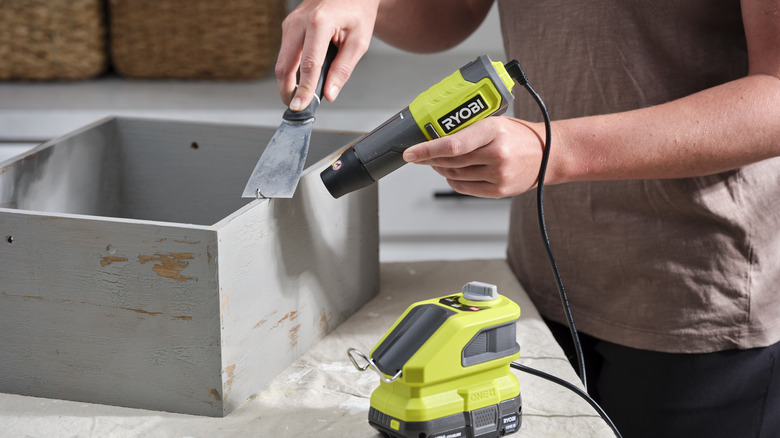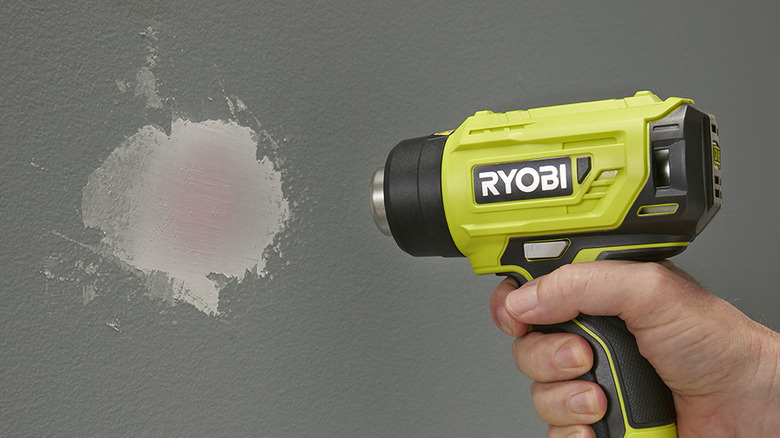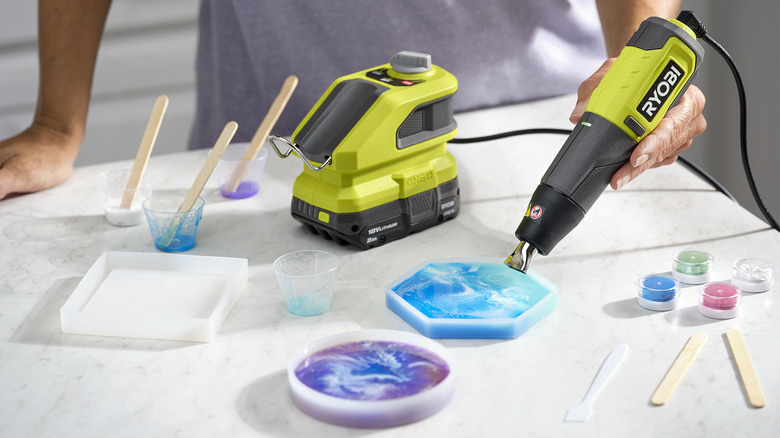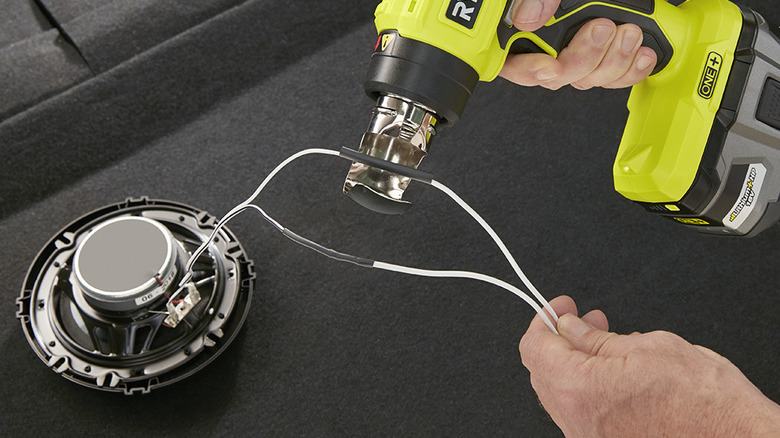Ryobi Heat Gun Vs. Pen: Which Tool Is Right For You?
A heating tool is a handy workshop implement, providing steady, high temperatures to your projects. Not unlike using a hair dryer out of a shower, a workshop heating tool is vital for quickly solidifying liquid or gel materials like adhesives, not to mention the occasional bout of home pipe thawing.
If you're in the market for a heating tool, the Ryobi hardware brand has two 18V options on offer: the ONE+ Heat Pen and the ONE+ Heat Gun. Both of these tools serve the same general purpose, providing a steady pulse of high heat for your workshop needs, though they have different price points and accessories.
The precise heating tool you need may vary depending on what you plan on using it for, not to mention your budget. For the sake of smart shopping, let's go over what actually differentiates these two devices and why you should purchase one over the other.
ONE+ Heat Pen features
The Ryobi ONE+ Heat Pen is ideal for precise, controlled heat application, with a compact body and direct heating element. The Heat Pen has a dual-temperature control dial, heating up to 450 degrees Fahrenheit on the low setting and 750 degrees Fahrenheit on the high setting. Just grab the pen off its integrated stand by its tapered grip and point it at whatever you want to get hotter.
The Heat Pen also comes with two attachable nozzles: the Deflector Nozzle and the Spreader Nozzle. The Deflector Nozzle has a rounded hook for holding up objects and delivering a controlled bubble of heat onto them, which is good for things like wires. The Spreader Nozzle spreads the ray of heat over a wider area, which is good for large spots and projects. Additionally, the integrated stand has a hook on the bottom that can hold the Heat Pen in place while activated, so you can keep the heat coming while your hands are busy.
The ONE+ Heat Pen is available at Home Depot for $59.97.
ONE+ Heat Gun features
The Ryobi ONE+ Heat Gun is your go-to gadget for large-scale heating jobs. Just squeeze the trigger on the ergonomic grip, and in just 10 seconds, you're at full operating temperature. If you continue to hold the trigger, you can reach temperatures of up to 875 degrees Fahrenheit. This intense, speedy heat will solidify any loose materials just like that.
Like the Heat Pen, the Heat Gun comes with a Deflector Nozzle, which can both hold up objects for heating and redirect heat into hard-to-reach places. Instead of a Spreader Nozzle, though, the Heat Gun comes with a Concentrator Nozzle, which focuses the heat from the gun into a smaller, more intense beam for faster, stronger heating. The bottom of the Heat Gun's handle also features a built-in LED light to illuminate your workspace, which is nice for nighttime construction or old basements.
The ONE+ Heat Gun is available at Home Depot for $79.
When to buy the Heat Pen instead of the Heat Gun
Ryobi's Heat Pen is probably a better choice than the Heat Gun if your heating needs are more hobbyist in nature. For example, if you're working with adhesives on wood or solidifying plastic or wires on a table, the Heat Pen will provide you with more precise, targeted heating. Since you can keep the heat coming with the integrated stand even without touching it, it's ideal for desktop multitasking.
Additionally, the Heat Pen's two-heat setting gives you a slightly greater degree of control over how much heat you're using, as opposed to the Heat Gun's constantly increasing temperature as long as the trigger is squeezed. If you're working with more sensitive materials in your crafts that may not respond as well to intense heat, the lower setting will give you the heat you need without starting any fires. The Heat Pen's exclusive Spreader Nozzle is also nice for carefully dispersing heat over a small area, like drying an entire line of glue at once.
When to buy the Heat Gun instead of the Heat Pen
The Heat Gun is the bigger, more expensive option than the Heat Pen because it's intended more for handiwork than casual crafts. As the LED work light might indicate, this device is designed for use on a construction site. The Heat Gun is less about delivering a careful trickle of heat to a little craft on a table and more for delivering a hearty blast of heat to a large pipe or stained wall.
Since the Heat Gun has a higher maximum operating temperature than the Heat Pen, it's your tool of choice if you need to either get a single thing exceptionally hot or deliver a large amount of heat to a larger surface. For example, if you're dealing with frozen plumbing pipes in the winter, the Heat Pen wouldn't provide enough heat in a wide enough area to properly thaw it, while the Heat Gun would do a better job of evenly heating it to the ideal temperature.
